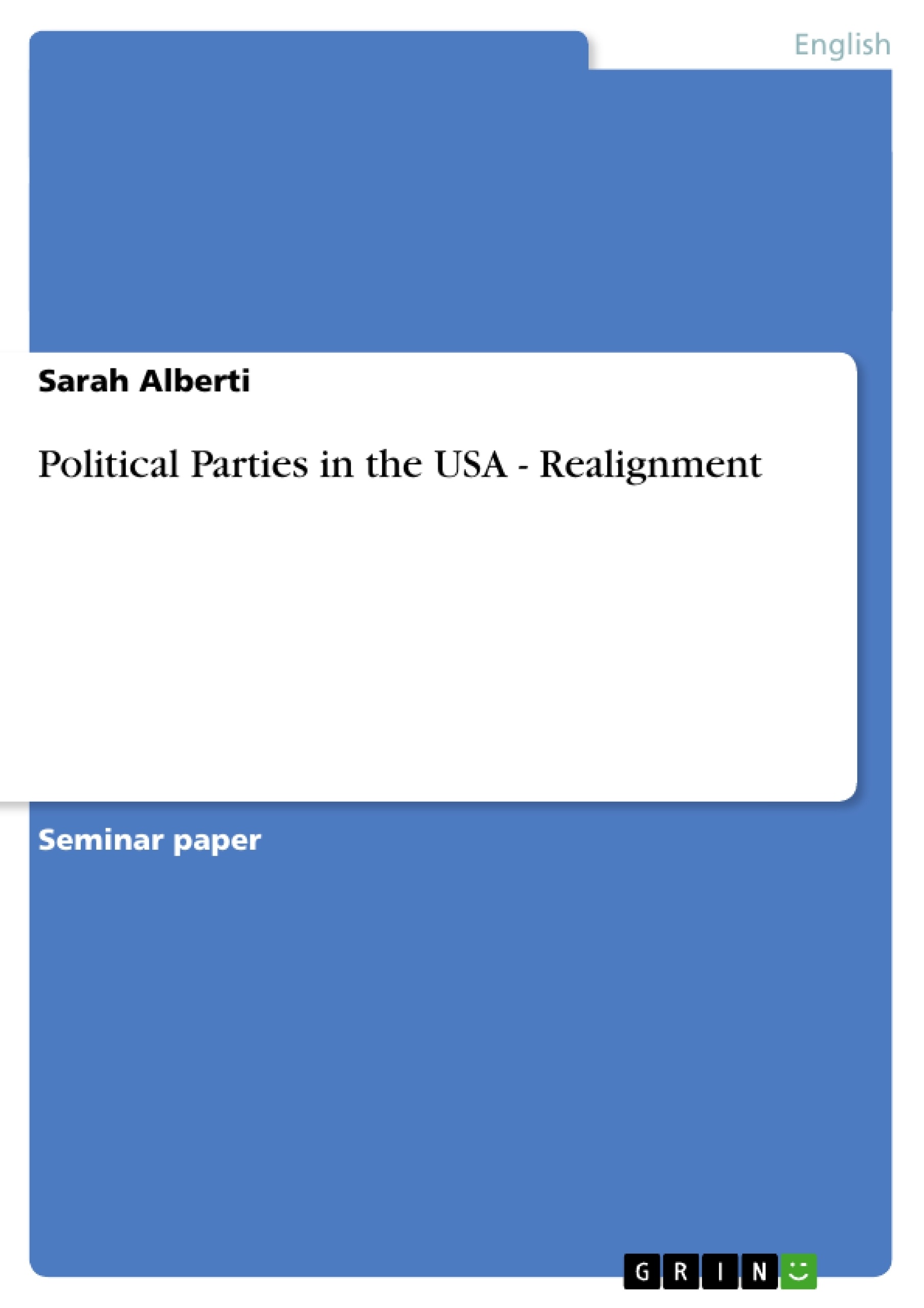The following term paper deals with the phenomena of realignment in the political party system of the United States. Although America’s party system is the oldest in the modern world it is marked by a deep distrust in parties leading back to the founding fathers who said that parties would only bring riots and chaos to the state. Political parties have existed on national level since the 18th century. And the two-party system which had been crystallised during this time, is still working in present days. The political parties in the United States became the mean for purpose; parties were to elect, to mobilise voters, not to govern There have already been amazingly modern party structures in the 1840s, a whole generation before such structures came up in Great Britain. In 1848 the first National Committee was built by the Democratic Party. And until the 20th century direct premises have been introduced. However, nothing much changed in the party’s organising structures since that time, and until today financial support is mainly made by a small group of giant donations. But one of the biggest differences to European parties is that American parties do not have mass memberships. The voters are ideological linked to their party, but they are not fixed to it. This link could be a basis for such a phenomenon as the realignment is. Realignments are essential for the American two-party system, and during history there have been four such realignments. In the following I will discuss the historical background of realignments and the Party Systems and I will try to find arguments whether there is a present realignment in favour to the Republican Party.
Inhaltsverzeichnis (Table of Contents)
- Introduction
- Realignment definitions
- Historical Realignments and the five Party Systems
- Realignment in favour of the Republican Party?
- Conclusion
Zielsetzung und Themenschwerpunkte (Objectives and Key Themes)
This term paper examines the phenomenon of realignment within the political party system of the United States. It explores the historical background of realignments and the five party systems that have shaped American politics. The paper also analyzes potential evidence of a current realignment in favor of the Republican Party.
- The concept of political realignment in the United States
- The historical development of party systems in the United States
- The role of critical elections and turning points in triggering realignment
- The potential for a contemporary realignment in favor of the Republican Party
- The impact of realignment on American politics and society
Zusammenfassung der Kapitel (Chapter Summaries)
The introduction discusses the significance of realignment in the American political party system, highlighting the historical development and the enduring two-party structure. It emphasizes the importance of realignment as a mechanism for responding to societal shifts and challenges.
The second chapter delves into defining realignment, exploring different perspectives on the phenomenon. It highlights the role of changing voter preferences and party identification in response to new issues and circumstances. The chapter analyzes the theories of political scientists V. O. Key Jr. and Lawrence G. McMichael and Richard J. Trilling.
Chapter three examines historical instances of realignment and the resulting five party systems in American history. It discusses the key events, social changes, and political dynamics that contributed to these shifts in party dominance and electoral behavior.
Schlüsselwörter (Keywords)
The key terms and concepts explored in this paper include realignment, party system, critical elections, voter behavior, party identification, historical analysis, Republican Party, and American politics.
- Citation du texte
- Sarah Alberti (Auteur), 2004, Political Parties in the USA - Realignment, Munich, GRIN Verlag, https://www.grin.com/document/45563



